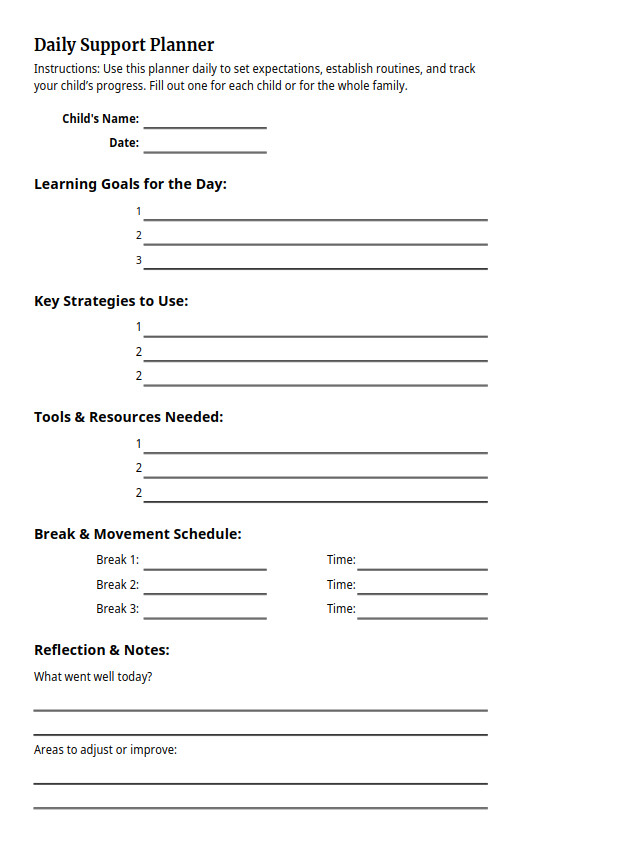Homeschooling Children with Special Needs: A Supportive Guide

Introduction
As homeschooling parents, we embrace the opportunity to tailor education to our children’s unique needs and strengths. When homeschooling children with learning disabilities such as ADHD, autism, or dyslexia, the journey can come with additional challenges—but it can also be immensely rewarding. This guide provides strategies, tools, and resources to help you navigate this path with confidence and compassion.
Understanding Learning Disabilities
To support your child effectively, it’s important to understand their specific challenges:
- ADHD (Attention-Deficit/Hyperactivity Disorder): Children with ADHD often struggle with focus, impulsivity, and staying on task. They thrive in environments with structure, flexibility, and frequent breaks.
- Autism Spectrum Disorder (ASD): Children with autism may face challenges with communication, social interactions, and sensory sensitivities. They benefit from clear routines, visual aids, and personalized approaches.
- Dyslexia: This learning difference affects reading, spelling, and writing. Dyslexic children often excel with multi-sensory instruction, audio books, and consistent encouragement.
Each child is unique, and their needs may span across categories. Observing and adapting is key.
Creating a Nurturing Environment
- Establish a Routine
- Create a predictable daily schedule with clear expectations.
- Incorporate frequent breaks to prevent overwhelm.
- Adapt Your Space
- Minimize distractions: use noise-canceling headphones or a quiet room.
- Provide sensory tools like fidget toys, weighted blankets, or sensory bins.
- Foster Emotional Support
- Practice patience and celebrate small victories.
- Create an open dialogue where your child feels safe expressing frustrations or needs.
Practical Teaching Strategies
- Break Lessons into Smaller Steps
- Use short, focused sessions to maintain engagement.
- Offer clear instructions and model activities when needed.
- Incorporate Hands-On Learning
- Use visual aids, manipulatives, and interactive materials.
- Emphasize multi-sensory approaches—see, hear, and touch.
- Leverage Technology
- Explore assistive technology like text-to-speech software, voice recognition tools, and specialized apps.
- Use digital platforms tailored to your child’s specific challenges, such as Khan Academy Kids for reading/math or Proloquo2Go for communication.
Support for Specific Needs
- ADHD:
- Use timers for focused work periods (e.g., Pomodoro technique).
- Encourage physical movement, like standing desks or exercise breaks.
- Autism:
- Use visual schedules and social stories to explain routines.
- Encourage self-regulation through mindfulness exercises or calming techniques.
- Dyslexia:
- Provide audiobooks and read-aloud sessions.
- Use programs like Orton-Gillingham-based reading curricula.
Building a Support Network
- Join Communities: Seek out local or online homeschooling groups for parents of children with special needs.
- Work with Specialists: Collaborate with occupational therapists, speech therapists, or special education consultants for guidance.
- Tap into Resources: Explore websites like Understood.org, LD Online, or Autism Speaks for expert advice and tools.
Encouragement for Parents
Homeschooling a child with learning disabilities can feel overwhelming at times. Remember:
- Celebrate your child’s progress, no matter how small.
- Trust your instincts—you know your child best.
- Be flexible and adjust as needed.
Every effort you make is a step toward helping your child thrive in an environment tailored just for them.
Printable Resource

